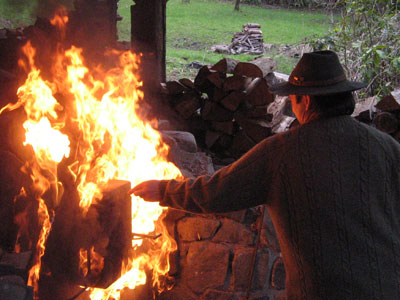- images of the anagama kiln
- about the kiln
- wood-fire workshop
- firing crew FAQ's
- photos of past firings
- calendar
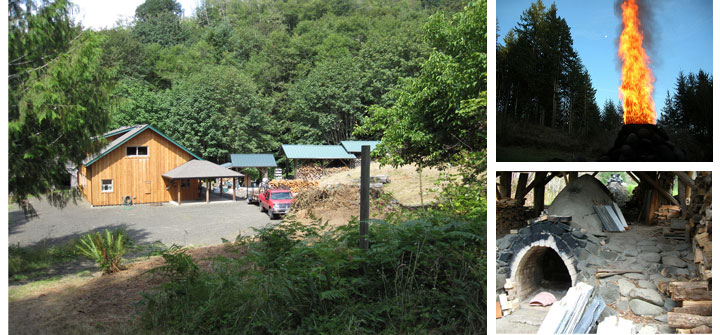
The setting for Jay Widmer's Alsea Anagama kiln is in the beautiful Oregon Coast Range - about 30 miles east of Waldport on the Pacific Ocean. Digger Mountain is an easy hike up homestead roads. Elk, bear, deer, bobcat and other wildlife can be seen on the property. It is also an exceptional birding site. The kiln is located in a truly scenic setting.
Please join us on Facebook - become a fan of "Jay Widmer's Alsea Anagama Kiln"
Videos from the firing of the Alsea Anagama Kiln
|
Each art pot and bowl from the Alsea Anagama kiln emerges from the earth and fire as its own unique and original self, receiving the fully focused attention of an artist, Jay Widmer, whose experience includes 25 continuous years as a potter and instructor. |
|
Introduction:Catch the mood of a wood-firing. Hear the crackle of the flame, the sound of the burning flyash working its way up through the pots loaded in the kiln. The special glow of the kiln during night firing. |
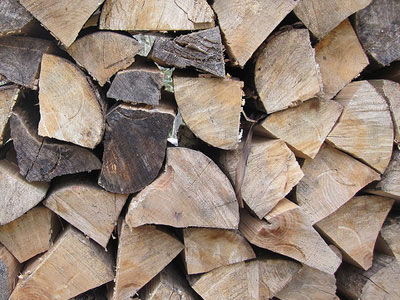 |
Wood Preparation:A key factor in the beautiful iridescence effects that Jay is able to achieve in the Alsea Anagama kiln is due to the wood he carefully selects for each firing. Wood from Jay's tree farm on Digger Mountain is cut to size for stoking the kiln during the 48 hour process. Fir, alder and maple are selected by type and moisture content so as to determine the glaze color and the amount of ash which is deposited on each piece as it is given over to the flame. |
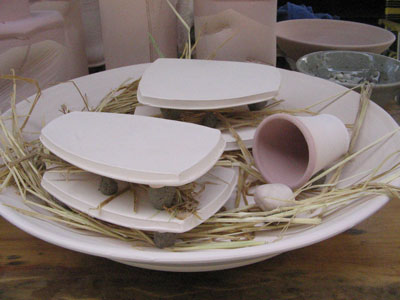 |
Pot Preparation:With the application of organic glazing materials, such as seaweed gathered from debris-laden beaches after Pacific storms, and Horsetail, a plant collected from marshy areas nearby, the artist can enhance the ash deposits and tracings left by the fire. Rice hulls provide extra silica (a glaze component) and leave their own signature imprint. Feldspatic crystals found in rocks gathered at a stream in Northern California create the white textural effects on the surface of the pieces. Along the Alsea Bay, Jay collects clamshells to impress markings on pieces and to use in his "clamshell stacks" (a group of pots, usually platters, stacked for firing in the kiln).
|
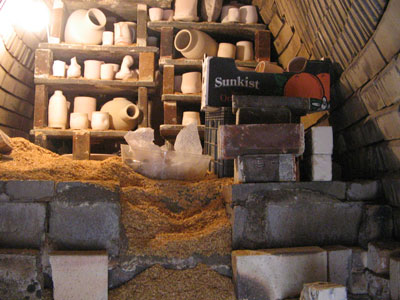
|
Loading the kiln:Careful placement of the pots is integral to the success of the anagama glazing by taking the best advantage of the flame path. Jay often creates objects specifically for certain areas inside the kiln, the front and back of the kiln producing a specific surface character that he may wish to enhance with a particular shape of pot or object. However, pots must not be crowded in the kiln or the flame passage is constricted, causing flashing and discoloration. |
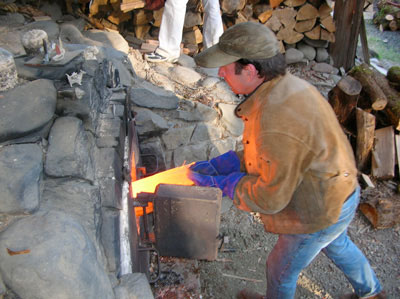
|
Stoking the Kiln:The kiln is stoked continuously for the next 48 hours. Wood is added about every 8 - 10 minutes during this time. Normally a crew of around 10 will attend to the kiln in shifts over the next two days. Firing continues through the night. Time in between the stoking cycles is usually spent relaxing and visiting with the other crew members. Typically there are three people on a stoke shift. One person will stoke the front of the kiln while the other two crew members stoke the side ports. This stoking process has to be carefully coordinated to prevent anyone from being burned. |
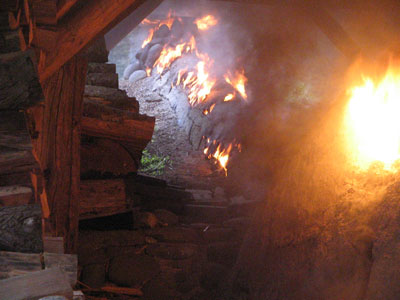
|
Final Stoke of the Kiln:After the kiln has fired for 30 hours at high temperature, the final kiln stoke is done. As much wood as possible is loaded into the kiln. The flue and all air holes are closed off. The photo at left shows the spectacular flame display that results from this closing off of the kiln. |
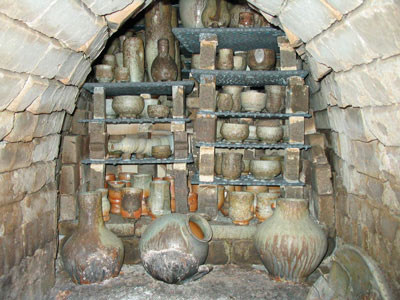
|
Unloading the Kiln:It takes a week for the kiln to cool. The door is then removed and the kiln is unloaded. Excitement and apprehension reign as the pots are unloaded and the magic of the fire is revealed. The pots in the front of the kiln take the most intense flames. They will end up will big, juicy ash drips and lots of texture from their exposure. Pots in back will be more variable in their coloring and typically display a blushing effect ranging from a deep orange to a salmon pink. Many of the pots will display the iridescence for which this kiln is noted. |
About the Alsea Anagama Kiln
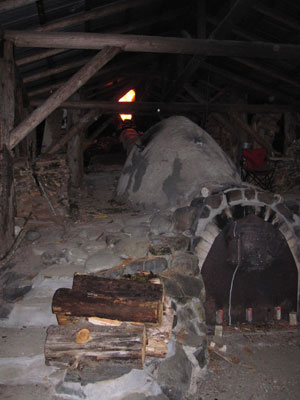
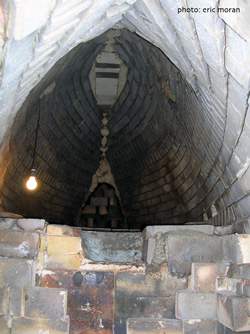 The Alsea Anagama kiln is based on the anagama style kilns originally built in Korea. The design of these kilns has evolved over the last 12 centuries in Japan. My kiln was designed and constructed in 1990. The kiln was designed by visualizing the shape of the flame and building ascending walls around the flame, thus directing the fire as it climbs up the slope of the kiln and works its way through the pots.
The Alsea Anagama kiln is based on the anagama style kilns originally built in Korea. The design of these kilns has evolved over the last 12 centuries in Japan. My kiln was designed and constructed in 1990. The kiln was designed by visualizing the shape of the flame and building ascending walls around the flame, thus directing the fire as it climbs up the slope of the kiln and works its way through the pots.
Previous experience building salt fire and stoneware kiilns, along with my experience heating my studio cabin with wood, helped me trust my intuitive sense of design. My design departs from the traditional Japanese anagama. The incline in the kiln is a steep 32%. The interior walls have sharp, radical curves that create turbulence and fly ash fall out. Perhaps the most important feature is the 4” cast tubes the bring super heated air to the fuel under the side stoke ports. The floor in the back of the kiln and the outer skins are insulated with soft brick and home-made castable. Click to see plans of the kiln.
This kiln ALWAYS reaches temperature. The standard duration of the fire is 48 hours (2 days only) with 30 hours of fire between 2300 to 2400 degrees farenheight. During the firing the kiln consumes 4 cords of wood. The woods used are a mix of fir, maple and alder harvested from my tree farm. Large fir limbs are used for “color” wood.
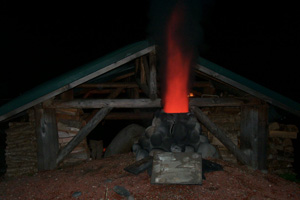 "My kiln is known for the color and flash achieved on the surfaces of the pots and the fact that my kiln consistently achieves temperatures in the cone 12 to cone 13 range. It has produced consistently outstanding surfaces for over 16 years - 35 firings.
"My kiln is known for the color and flash achieved on the surfaces of the pots and the fact that my kiln consistently achieves temperatures in the cone 12 to cone 13 range. It has produced consistently outstanding surfaces for over 16 years - 35 firings.
The firing is run somewhat loosely as a workshop where I will share my observations and techniques gathered from over 16 years of successful firing of the Alsea Anagama. Although each firing has its own unique elements, I have learned there are many common factors involved in a successful wood fire. The type and water content of the wood used, the clay bodies of the pots, wadding and glazes used, and stoking of the kiln -- all contribute to a successful firing. This information is shared with all participants of the firing in a post firing recap session."
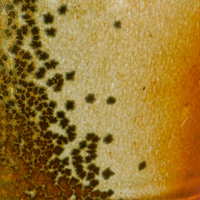


"I stack loosely for a more open flame path to insure that all pots in the kiln are smacked with lots of flame and ash. Cooling is slow and takes over a week. Some oxygen is allowed to enter the kiln for the first two days of cooling which seems to promote iridescence and has a large impact on the development of color, texture and crystal growth on the pots as can be seen on the photos at right.
:: Jay Widmer's Alsea Anagama ::
Apologies to all signed up
the Wood-Fire Workshop scheduled for
Summer 2012
has been cancelled this year!

The Alsea Anagama kiln is the third wood-fired kiln built in Oregon and has been continually fired over the last 20+ years. The kiln has been fired over 50 times. Jay has a multitude of experience in building and firing kilns. He has built and fired over 25 kilns including his Alsea Anagama kiln over the course of his 40+ years as a professional potter. Jay would like to help others learn from his experience and is opening up the Anagama kiln for a Professional Development Workshop to other potters.
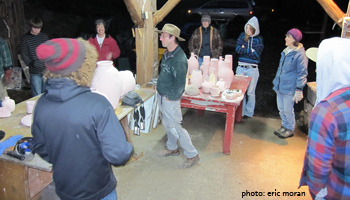 Once a year, a special firing for Professional Development will be scheduled to learn from Jay his methods and theories on wood-firing: the process, factors involved in the firing, forms and clay bodies that work well in the wood-fire, loading & unloading the kiln. The workshop provides "hands-on" experience in wood-firing and will also include discussions/lectures about wood-firing. This intensive workshop will begin with a preliminary session on clay bodies, forms, wadding, and the use of glaze. The actual firing process will begin on a Friday afternoon after the loading of the kiln, firing for 48 hours to end on Sunday evening with the ritual of the final stoke. Participants will return the following Friday morning for the unloading of the kiln and a review of the firing results. Potters will staff the stoking shifts and participate in all phases of the firing. See the firing crew FAQ's for more information about what is involved.
Once a year, a special firing for Professional Development will be scheduled to learn from Jay his methods and theories on wood-firing: the process, factors involved in the firing, forms and clay bodies that work well in the wood-fire, loading & unloading the kiln. The workshop provides "hands-on" experience in wood-firing and will also include discussions/lectures about wood-firing. This intensive workshop will begin with a preliminary session on clay bodies, forms, wadding, and the use of glaze. The actual firing process will begin on a Friday afternoon after the loading of the kiln, firing for 48 hours to end on Sunday evening with the ritual of the final stoke. Participants will return the following Friday morning for the unloading of the kiln and a review of the firing results. Potters will staff the stoking shifts and participate in all phases of the firing. See the firing crew FAQ's for more information about what is involved.
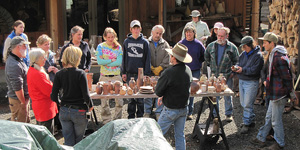 "My kiln is known for the color, flash and ash achieved on the surfaces of the pots and the fact that my kiln consistently achieves temperatures in the cone 12 to cone 13 range. It has time and again produced outstanding surfaces for over 20 years. The professional development firing is where I will share my observations and techniques gathered from 50 successful firings of the Alsea Anagama kiln. Although each firing has its own unique elements, I have learned there are many common factors involved in a successful wood-fire. The type and water content of the wood used, the clay bodies of the pots, wadding and glazes used, and stoking of the kiln -- all contribute to a successful firing. This information is shared with all participants."
"My kiln is known for the color, flash and ash achieved on the surfaces of the pots and the fact that my kiln consistently achieves temperatures in the cone 12 to cone 13 range. It has time and again produced outstanding surfaces for over 20 years. The professional development firing is where I will share my observations and techniques gathered from 50 successful firings of the Alsea Anagama kiln. Although each firing has its own unique elements, I have learned there are many common factors involved in a successful wood-fire. The type and water content of the wood used, the clay bodies of the pots, wadding and glazes used, and stoking of the kiln -- all contribute to a successful firing. This information is shared with all participants."
 Workshop Format ::
Workshop Format ::
- Evolution and overview lecture :: clay bodies, process, glazing, forms, what to expect.
- Wood selection:: the crew will be involved in splitting and processing of wood for the firing.
- Wadding :: making of and prepping pots for atmoshperic firings.
- Glazing :: What glazes work in a wood-fire atmosphere.
- Stacking the kiln :: Strategies for loading, flame paths, proximities of surrounding pots, spacing, flame effects at various locations in the kiln.
- Firing :: Flame management, wood selection for various times of the firing, stoking sequences - when & why,
- Final Stoke/Cooling :: Reduction cooling techniques to achieve iredesence on pots.
- Unloading of Kiln (Saturday, June 30)
- Clean-up/kiln
- Feedback, debriefing, wrap-up of firing
Workshop Fee ::
$350 includes firing space for three 12 x 24 inch kiln shelves. When stacking your pots for the kiln space you will need to account for posts and space between the pots. We will have a board set up at the kiln that you will be able to stack/measure your share on. Enrollment is limited to 12 participants.
Small groups will be responsible for one meal (you will be notified as to which meal) and breakfast is individual choice. Lodging is not provided - there is unlimited camping space on-site, or lodging in Waldport (27 miles / 30 minutes west) or Corvallis (35 miles / 50 minutes east). There is limited refrigeration available - so please bring your own cooler. There is no cell phone reception at the kiln location. Please review firing crew FAQ's for more information as to the firing process and what to expect.
A $100 deposit (refundable up to June 1st, non-refundable after June 1st) is required to reserve your space.
If you are interested in participating please email Jay, or call 541.738.7601 for more information and availability of space.
I'm on the firing crew; now what?
| space allocation | clay bodies to use | what forms work well | wadding pots | glazing the pots |
| what happens during the firing | what to wear | sleeping arrangements | eating arrangements | pets |
Timing
Firing: The firing is broken up into two time frames. The actual loading and firing process starts on a Thursday afternoon and finishes up on Sunday (about 72 hours later). Most participants will stay at the kiln site on Friday and Saturday nights. Pot preparation normally occurs on Thursday afternoon and Friday morning. The loading of the kiln typically starts around noon on Friday. It takes about 6-8 hours to load the kiln and the fire is started on Friday night.
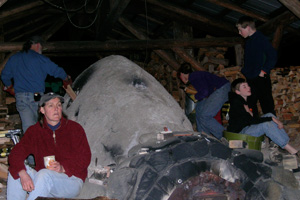 The kiln is brought up to temperature rapidly, and by Saturday afternoon side stoking begins. Stoking occurs around the clock beginning with the initial fire start-up. See Firing section for more information about the stoking cycles.
The kiln is brought up to temperature rapidly, and by Saturday afternoon side stoking begins. Stoking occurs around the clock beginning with the initial fire start-up. See Firing section for more information about the stoking cycles.
The kiln gets its final stoke on late Sunday afternoon. This is a favorite time for the participants as we get to watch the kiln "explode" in flames.
Unloading: The kiln is cooled during the following week and by Saturday is ready to be unloaded. Unloading starts at 10 am on the Saturday following the firing. The kiln is unloaded, shelves are stacked, the kiln is vacuumed in preparation for the next firing, and general cleanup of the kiln area is done.
Lunch is a potluck during which the firing/process is reviewed and Jay will give his observations about the firing - decisions and consequenses of stacking, wood choices, etc.
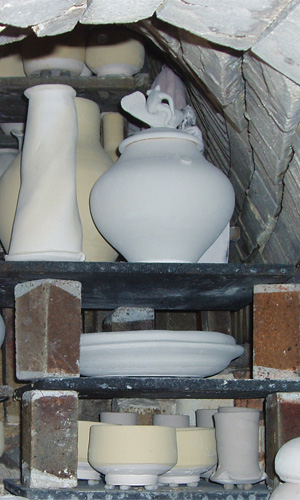 Space Allotment
Space Allotment
Regular crew members are allotted 16 cu. ft. (think six 12" x 24" shelves loosely loaded with posts included) for a full position which costs $400. A position can be split between two people. Occasionally, guest potters are invited to participate and they can fire up to 5 pots at no charge.
top
clay bodies
The best clay bodies for wood-firing are fine grained, porcelainous clay that have around 1% iron. For example, Georgie's Umpqua and Clay Art Helmer and Laguna's Coleman Porcelain clays will reliably blush quite beautifully in the kiln. These clay bodies tend to be "ash sticky" and will respond well to the flame. The stonewares will also show well with a light shino application. For a darker look Georgie's Trail Mix and Laguna's Soldate 60 produce some interesting effects. Porcelains also fire well in the back of the kiln - Aardvark's Coleman Porcelain and Georgie's, Mt. Hood and Crystal Springs have created striking glaze effects. These clays can be too fine-toothed for larger pieces though. For larger work you should consider blending the clay bodies with coarser, low-iron clays. I usually use crushed feldspar as a grog to open the clay body. Feldspar chunks are available from Clay Art.
Pots need to be bisqued fired prior placement in the kiln.

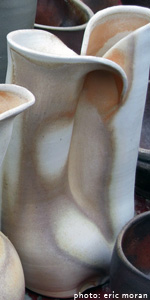 forms that work well in the wood fire
forms that work well in the wood fire
The exciting aspect of wood-firing is seeing how the flame and ash can accentuate and highlight the form of a pot. Both thrown and handbuilt pieces work well in the fire. Simple forms do better at highlighting the flame effects.
top
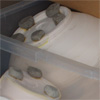 wadding
wadding
All pots must be wadded for placement in the kiln. There are many approaches to wadding, which gives us an opportunity to learn from each other. Each participant is responsible for mixing and bringing their own wadding and glue for attaching the wads. Wood glues from Elmers work well to attach wadding to the pots.
The following is a suggested formula for the wadding:
1 part ball clay
1 part fireclay
1 part grog or sand
3 parts fine sawdust (ant hill casting are the best)
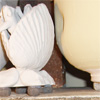 Wadding can be applied while wet. Rolling a "log", slicing into similar sizes, then rolling those slices into balls to be glued onto the pots works well. View the video on "Pot Preparation" for more information.
Wadding can be applied while wet. Rolling a "log", slicing into similar sizes, then rolling those slices into balls to be glued onto the pots works well. View the video on "Pot Preparation" for more information.
glazing
Pots can be fired "bare" (sans glaze) or coated with a light spraying of Shino glaze. The light coating of glaze helps make the pots surface more "sticky" and able to attract and hold more of the fly ash circulating through the kiln. Most participants line vessels with a shino glaze. Glazes other than a shino can produce "interesting" looks. Different effects can also be achieved with various clay slips.
top
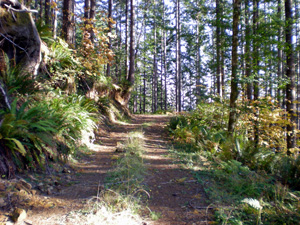 during the firing - wood prep, stoking, free time
during the firing - wood prep, stoking, free time
Kiln stoking is split into 4 hour shifts around the clock. Evening/night shifts are selected by the firing crew on Friday after the kiln is fired up. Normally, three people will work a shift. One person on the front stoke and two on the side stoke. The shifts run 8-12, 12-4, and 4-8. The firing schedule will be worked out at the beginning of the firing. the kiln is typically stoked about every 10-15 minutes depending on the flame. When not stoking, the crew is usually involved in getting wood prepped for the next firing, hiking up the hill, talking & sharing with the other crew members and food preparation.
 what to wear
what to wear
A wood-firing is about Fire! Wear comfortable, natural fiber clothing. A spark coming into contact with synthetic fibers can cause burns. The weather can be variable, so plan and pack accordingly. A warm jacket, gloves, and hat make night stoking more comfortable. You should also wear long cotton pants while stoking. A sturdy pair of boots makes it easier to move about the kiln area and can keep your feet dry if you decide to hike up to the top of the hill. A good pair of leather gloves for stoking are also needed.
top
 sleeping arrangements
sleeping arrangements
Space is available on site for campers and tents. Most participants camp out on-site. The closest other lodging would be either west in Waldport (on the Oregon Coast) 28 miles, or Corvallis to the east about 35 miles. There is a new studio building on site with a bathroom, rudimentary kitchen (no stove) and a place for everyone to eat inside. Hot water is expensive, so most participants don't shower during the two day firing. However, the bathroom is available for all participants.
top
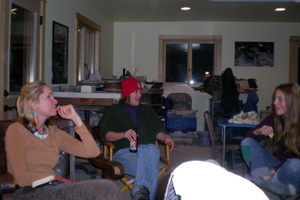 eating arrangements
eating arrangements
Food/kitchen duties are assigned by meal for lunches and dinners. You should expect to be involved in getting one meal ready and taking care of clean-up for your assigned meal. And since most potters are good cooks, no one will complain if you decide to show off your culinary talents! Bring your own breakfast foods, including coffee. Firings are also BYOB - although much sharing goes on during the firing. Snacks to share are also appreciated.
There is basic kitchen equipment, although no oven is available. A charcoal bar-b-que, propane 3 burner cooktop, pots and pans, dishes, silverware, cups and glasses, refrigerator and sink are available for all to 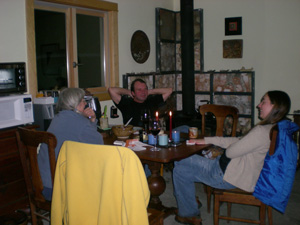 use.
use.
Depending on weather, eating is either outside near the kiln, or inside the studio building. Participants are responsible for washing their own eating utensils (plate, bowl, cup, silverware, etc.) Potters in charge of the assigned meal additionally handle the rest of the cleanup for the meal (pots, pans, leftovers, counter cleanup, etc.)
 Pets
Pets
Bowzer was the resident "kiln dog." We still request that you leave your pets back at home, please.
photos from previous anagama firings
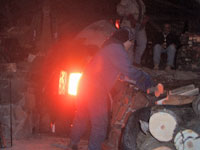 |
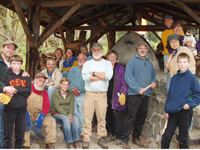 |
|
| June 2015 | October 2006 | April 2007 |
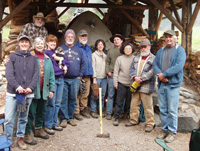 |
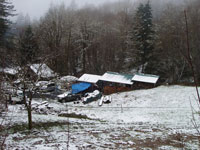 |
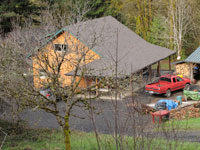 |
| October 2007 | April 2008 | October 2008 |
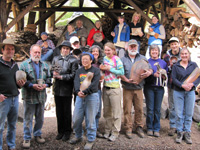 |
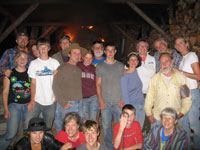 |
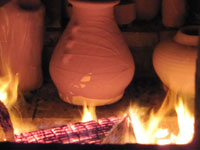 |
| April 2009 | September 2009 | November 2009 |
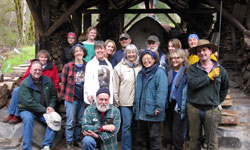 |
HELP! my fellow crew members! I need a photo of the firing crew! |
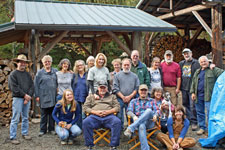 |
| April 2010 | June 2010 | October 2010 |
 |
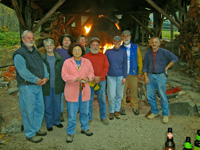 |
|
| Logging Operations 2012 | October 2005 |
Calendar of Upcoming Events and Firings - 2017
Mother's Day Celebration
2017 :: 'Art in the Garden' ::
at The Thyme Garden
Saturday May 13t :: Sunday May 14th :: 10am to 5pm both days
Wheel Throwing - Wood Fire Workshop :: Digger Mtn Studios - Alsea Anagama Kiln, Alsea, OR
July 6, 7, 8, 2017
- 9:00 am to ?? :: Wheel Throwing
July 13, 2017 - 9 am to ?? - Pot Preparation
July 13, 14, 15, 2017 - around the clock :: fire anagama kiln
July 22, 2017 - Unload anagama kiln
Regular Anagama Firing :: October 2017 :: Dates to be determined

